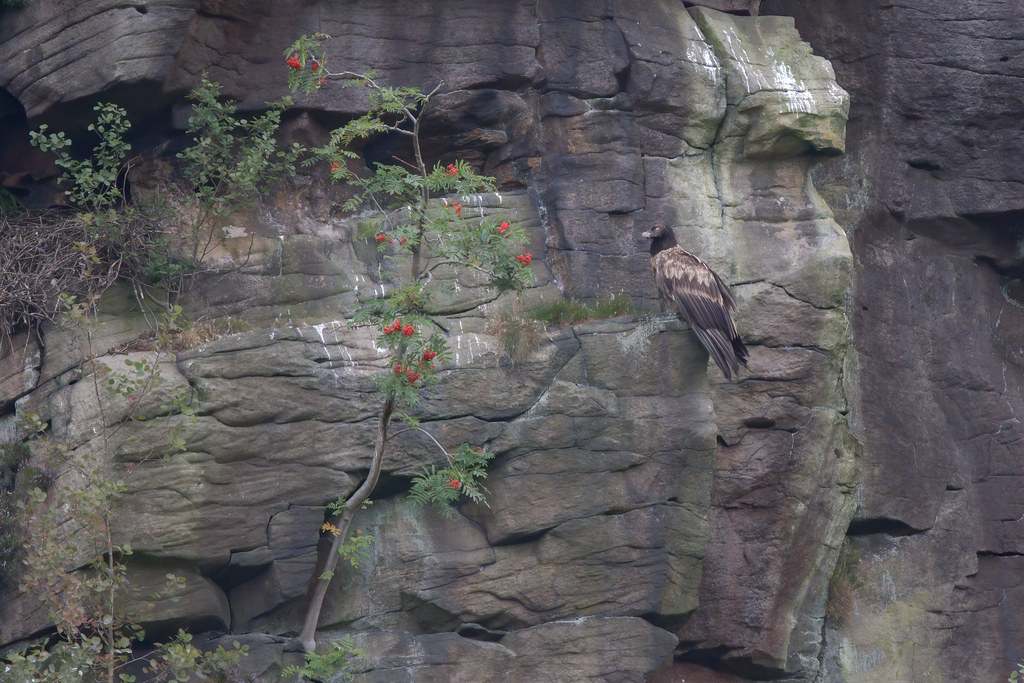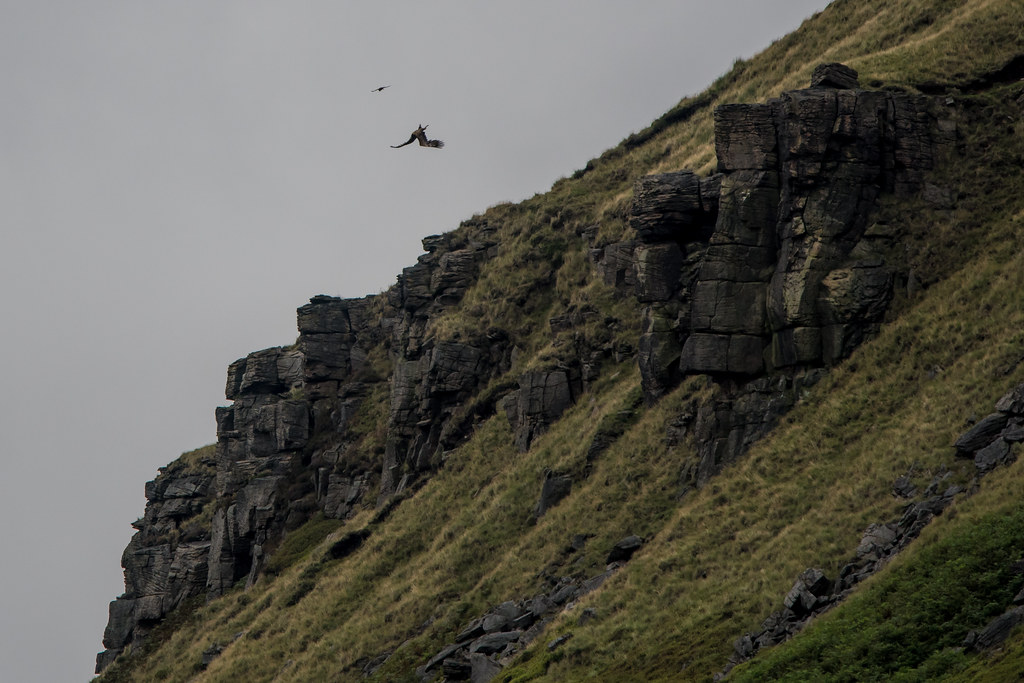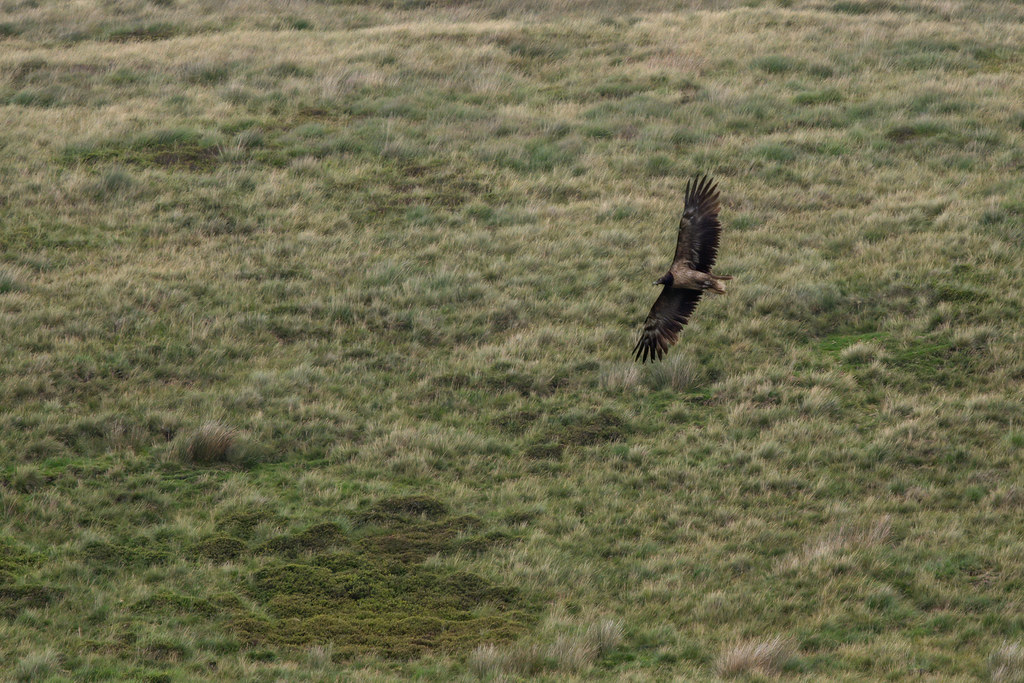
Tim writes: some years ago I served on the British Ornithologists’ Union Records Committee (BOURC) which assesses and maintains the official list of British birds. Category A of the British List is for any truly wild bird that arrived in Britain naturally. An immature Lammergeier ranged widely in Devon during May 2016 but this has not been added to the official list. BOURC will have a problem with Lammergeier because this year’s Yorkshire bird and the 2016 Devon bird almost certainly emanated from the reintroduced population in the Alps. Now BOURC allow self-sustaining populations of introduced birds onto the British list on Category C. This category includes familiar introduced birds like Little Owl, White-tailed Eagle, Capercaillie and Pheasant. There is even a subcategory C5 which allows birds from self-sustaining introduced populations abroad onto the British List if they wander here (Sacred Ibis might possibly qualify under this subcategory if it wandered to Britain from the feral population on the Continent). But the problem is that the reintroduced population of about 55 pairs of Lammergeiers in the Alps might not yet be self-sustaining. I think that almost all of the breeding birds are captive-bred released birds, with just a handful of wild-bred breeding birds. So even though the Peak District bird was almost certainly reared from a wild nest in the Alps, as it has no tags or rings, it might struggle to be admitted onto the British List. This is because its parents belong to an introduced population that might not yet be self-sustaining. Some people are referring to the Yorkshire Lammergeier as Category E, which seems wrong as that is the category for undoubted escapes, like Budgies, Canaries and Cockatiels. This was a bird from a wild nest and it has never been in captivity so it is most definitely not Category E. But this bird’s status is more complicated than most species considered for addition to the British List. In addition, it seems that it is not just this individual Lammergeier that will need to be assessed by BOURC, but the whole population whence it came.

Bearded Vultures were hunted and poisoned to extinction in the Alps with the last one being shot in 1913. This was because of a mistaken belief that they were bloodthirsty hunters of livestock rather than benign eaters of bones from creatures that had already died. After many decades of absence in the Alps it was decided to reintroduce Lammergeiers, and offspring were taken from about 100 captive breeding Lammergeiers in zoos and collections around Europe to supply the reintroduction. The first reintroductions of captive-bred Lammergeiers began in 1986 in Austria, and up to 2015, 204 young birds had been released into the Alps. The first wild-hatched chick was in 1997 and the success rate has increased since then. By 2015 a total of 148 wild broods had occurred (they lay 1 or 2 eggs in a brood). By 2015 there were 220-250 free flying Lammergeiers in the Alps. They were planning to continue releasing birds both to improve genetic diversity, and to plug a distribution gap in Switzerland. Last year, in 2019 a record 35 young were reared wild in the Alps, presumably including the Peak District bird which has wandered to Britain under its own steam. So the question that BOURC will need to address is whether the Alps population is now self-sustaining. That is, if no more captive-bred birds were released, would this population be able to maintain itself, or maybe even increase?

Just for comparison White-tailed Eagles were introduced to the Isle of Rum in 1975. Over a hundred were released over the next 10 years but they did not fledge the first chick until 1985, ten years later. A further 60 were released 93-98 in Wester Ross. By 2006 36 pairs bred, 17 were successful, raising 29 young. This population was considered to be self-sustaining by 2010, and possibly earlier.
[registration_form]
If the wanderings of this bird, and the 2016 one, are typical behaviour ( even of a small percentage of the population ), i find it strange there are not at least a smattering of records ,
from the 18/19 th centuries, or did they all get shot before crossing the Channel ?.
Trapit – good point
It is a good point, and difficult to explain. But the Alps must have had a very small population during the 19th century if they were persecuted to extinction by 1913. Also this current bird was reported in Belgium, Normandy and the Channel Islands before it arrived in Britain. Had this been a hundred or more years ago there would be plenty of opportunity for its journey to be curtailed before it reached Britain. Also young raptors wander in search of a suitable, vacant nesting territory. Maybe the young in the Alps now wander more because the suitable territories are largely full with the expanding introduced birds. And finally, large birds of prey that rely on thermals for sustained flight show a reluctance to cross water (where there are no thermals). Look at the very few records of Booted and Short-toed Eagles, and the other vultures, which are all found in France. Also those migrating raptors that will cross water (eg Honey Buzzard) make detours to minimise water crossings to places like the Bosphorus and Gibraltar. But I think it is surprising that one Lammergeier made it across the English Channel, but utterly staggering that two have made it.
What is BOURC’s definition of self-sustaining?
It seems to me, from Tim’s blog that the population must surely be on the verge of self sustaining at least, if not fully so; but only recently.
The people working with the population in the Alps say that the population is, and has been for sometime self sustaining. They are however continuing to release birds in order to increase genetic variability.
BOURC has problems with the ‘Yorkshire’ bird Tim?
Hi Mark. I retired from BOURC about ten years ago (after a ten year period of service) so I do not know what their current thinking is. But they did not accept the 2016 bird, so I assumed their concerns may persist with this bird as the circumstances are very similar. Sorry I called it the Yorkshire bird. This must have been particularly galling to someone originally Derbyshire. I wrote this to accompany a photograph on Flickr some weeks ago when the bird was hanging around Abbey Brook in South Yorkshire. It was later that it decided to take up temporary residence in two different parts of Derbyshire. But you are right. I should have called it the Peak District bird.
Indeed, after being welcomed, and protected, by the moorland managers of the Peak District
generally , it is a thoughtless, but not entirely unexpected claim from that county.
I can not believe the bird survived flying over yorkshire.